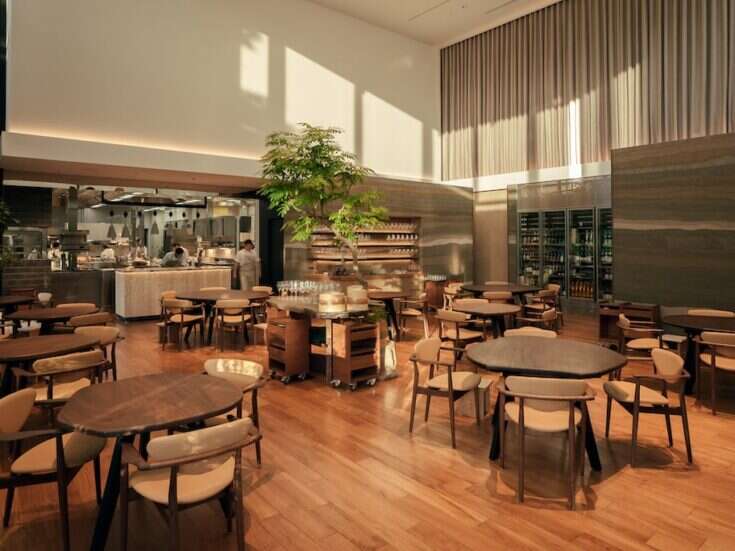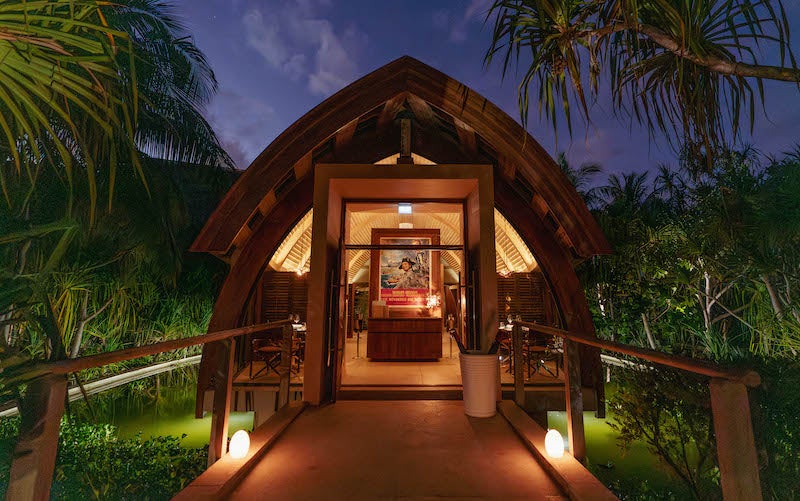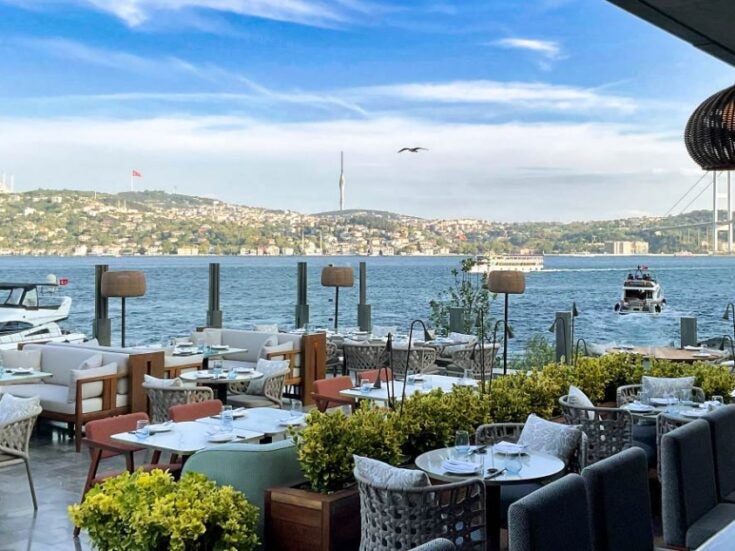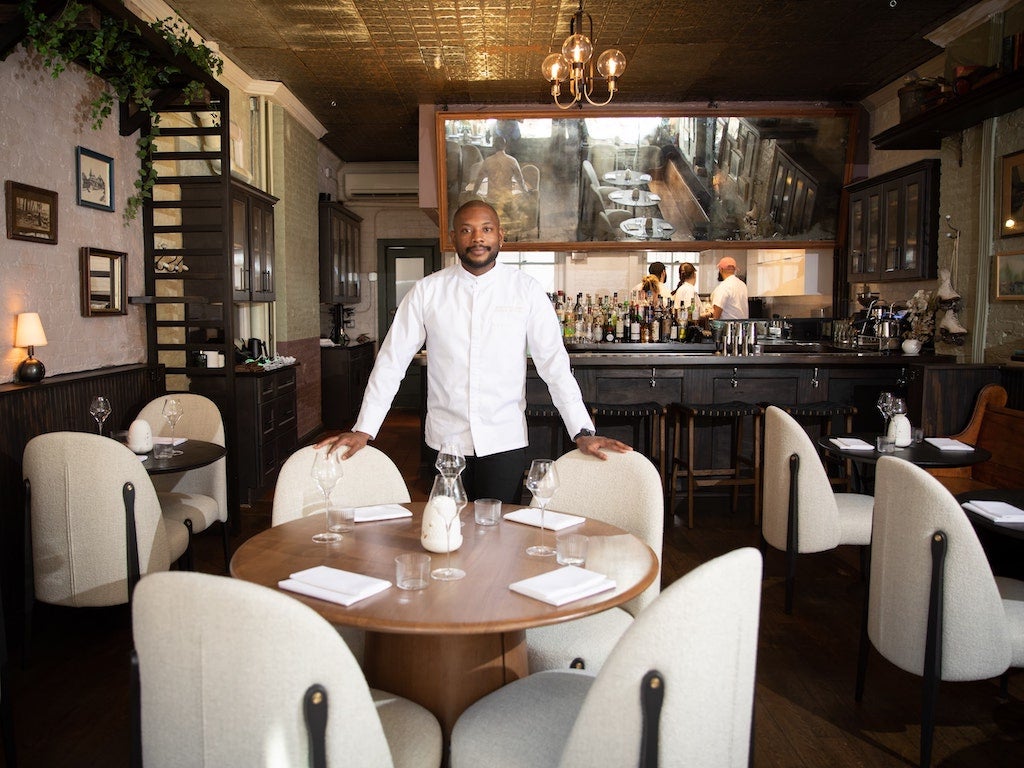
A new generation of chefs is emerging from the world’s most famed culinary institutions. With them come a collection of smart, self-assured and refreshingly modern restaurants.

In fine dining, a few big names reign supreme. Yes, we are continuously treated to new openings and concepts, but at the top is a collection of restaurants and chefs that dominate.
Naturally, though, from these top-line restaurants eventually emerges the new wave of gastronomic stars. Armed with the precise skill and knowledge it takes to succeed in the most demanding kitchens, as well as their own unique style and bold ambitions, these chefs are carving out new corners in the industry, proving that gastronomic luxury has many guises.
We bring you four chefs and four up-and-coming restaurants that have flown the nest and are making names for themselves in some of the most reputable (read: intimidating) culinary hot spots in the world.
Tom Meyer
Granite, Paris
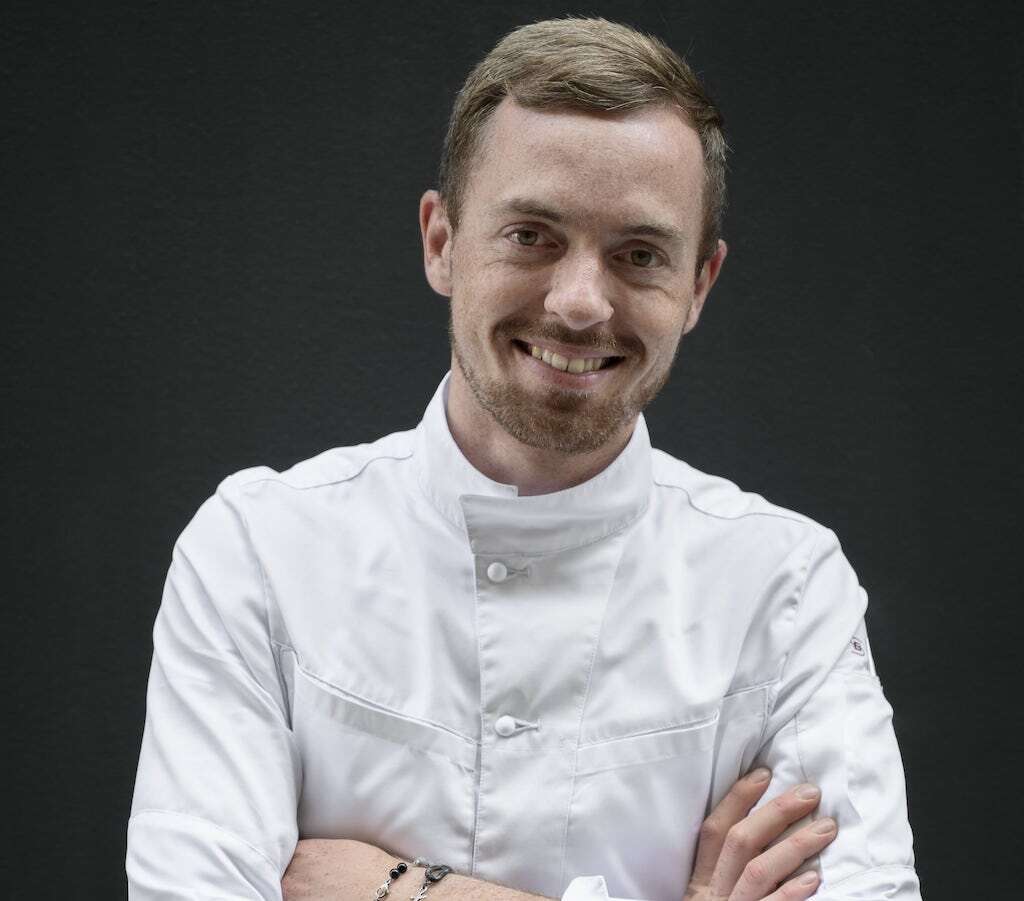
Standing out in Paris is no mean feat. The birthplace of haute cuisine and the home of some of the most influential restaurants, the French capital has long been one of the most respected food cities in the world. The 100-plus Michelin stars scattered across its historic streets are proof that its influence is as big now as ever.
One of the latest restaurants to receive one of those coveted stars is Granite, which opened on a quiet backstreet in the 1st arrondissement in 2021. Helmed by Tom Meyer — who at the time of opening was just 30 — the restaurant belongs to a new wave of Parisian restaurants that hold the principles of classic French cookery in high regard but aren’t afraid to push the boundaries of modern cuisine. It doesn’t go quite as far as molecular gastronomy, but it’s rule-bending and highly creative nonetheless.
[See also: Granite: Paris’s Latest Must-visit Restaurant]
Meyer learned his craft from the very best, having worked under the likes of Benoît Violier and then Franck Giovannini at L’Hôtel de Ville in Crissier, Switzerland and more recently as head of the test kitchen at Anne-Sophie Pic’s pioneering Maison Pic.
His signature style is to take ingredients that any diner would recognize — be it asparagus, chicken, peas — and serve them in a way few will have seen before. Like the chefs he trained under — Pic in particular — Meyer holds ingredient provenance in the highest regard.
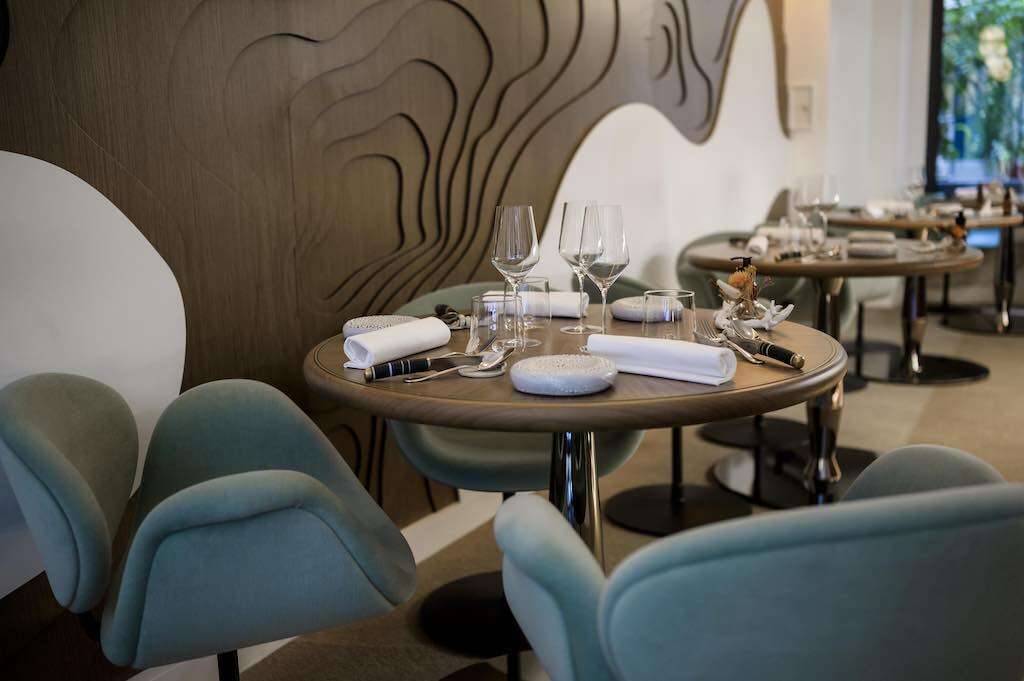
Each purveyor the restaurant works with has been individually selected not just for the quality of their produce but also their commitment to working with respect for the earth and the landscape; this respect translates readily into every plate that leaves the kitchen. No longer is luxury dining all about flying in the rarest, most lavish ingredients; nowadays, it’s about knowing exactly who grew them.
The space in which these dishes are served is the result of impeccable research, too. The restaurant is spread over three floors — from the atmospheric basement bar to the breezy second-floor dining room — with guests invited to travel through each during their dining experience.
“The restaurant is both atypical and intimate,” Meyer explains. “For me, the [main floor] kitchen is a living space, and that’s why the open kitchen is so important. The customers can observe the preparation of the dishes directly, and the chefs can communicate with them. This proximity is very important — I believe it is the new luxury in gastronomy.”
[See also: Iris: Inside the Floating Norwegian Restaurant]
Tom Meyer’s signature dish
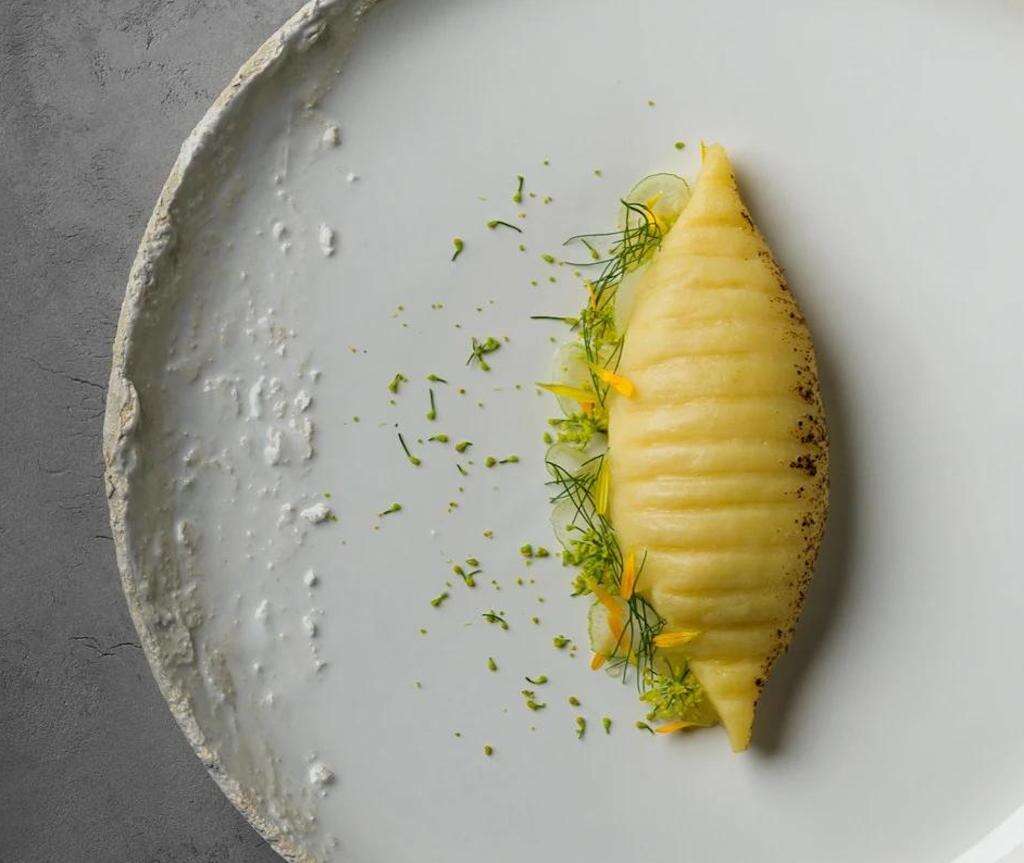
“When Granite opened, I created a dish that I had been thinking about for several years. I was experimenting with different types of dough, flour, sauce and dressing, and finally developed a recipe that suited me: Gnocchi with a flowing heart, with a sauce hidden inside the dough.”
Chantelle Nicholson
Apricity, London
We may have listed her as a rising star, but Chantelle Nicholson is no stranger to the London food scene. The New Zealand-born chef was formerly group operations director for Marcus Wareing restaurants, but it was at the beloved Tredwells where she really gained her reputation.
She was involved in the restaurant’s opening in 2014, but in 2018 she stepped up to become chef-owner. It was her pioneering sustainable ethos that saw the London restaurant icon receive a green Michelin star in 2021.
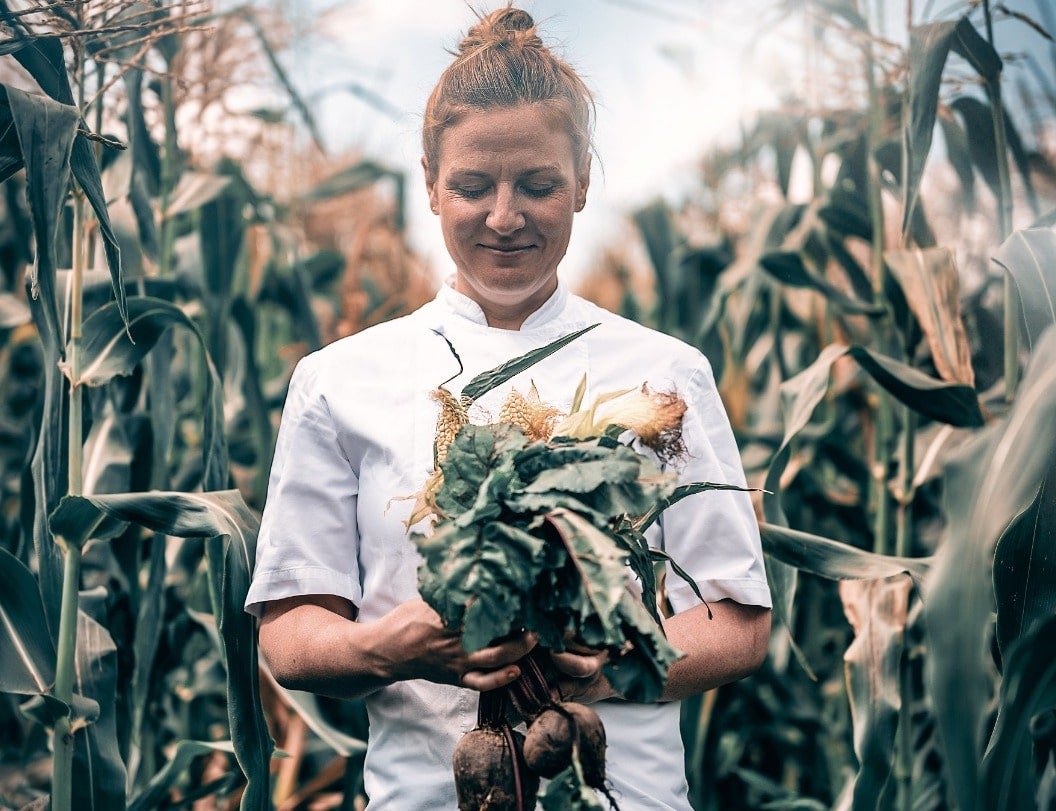
In 2022, on the back of the success of Tredwells’ green ethos, Nicholson opened Apricity: a fine-dining restaurant dedicated to zero-waste style of cooking. London isn’t short of eco-friendly restaurants, but Apricity is one of the few that has not only lived up to its own exacting sustainability standards, but has also ensured its food is still fun, accessible and, most importantly, delicious.
Eco-consciousness is embedded in every element of the menu, but guests aren’t left feeling shunned for their own lack of virtuosity.
“It felt liberating to open my own restaurant,” Nicholson says. “I’ve been in the game for a long time, and you get to the point where you know exactly how you want a restaurant to be. I love the challenge of a new opening — it’s so exciting to be able to pick every single element and bring it all together to create something that is living and breathing and has a heartbeat. We really took our time with it: We didn’t rush and we practiced a lot. It was a really enjoyable experience for me.”
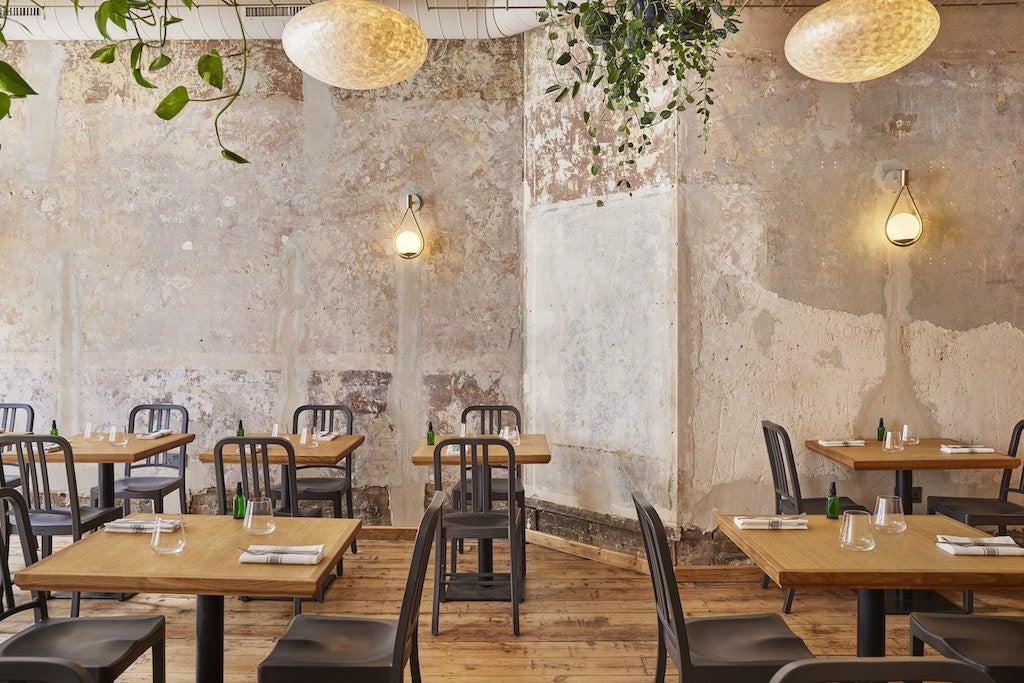
Apricity’s menu is ever-changing but always sticks to hyper-seasonal and local products, sourced as a result of long-forged relationships with only the most reputable and responsible suppliers.
Although diners will find a few meat dishes (beef is sourced from Cheswell Grange farm, where calves spend their entire lives with the herd out on the field), the menu is veg-forward — a key part of Nicholson’s culinary ethos and one that has garnered her big recognition. The recognition has continued, and Apricity was awarded a Green Michelin star in the 2023 guide.
The planet-first approach weaved its way into the restaurant’s design too. London-based firm Object Space Place, who employed the ideas of a circular economy to the project, is responsible for Apricity’s interiors.
Much of what was originally a retail space was repurposed and upcycled, with new items carefully sourced to limit their impact. In order to ensure accountability, Object Space Place measured the carbon footprint of completing the project; their findings showed a 41% reduction compared to a standard restaurant outfitting.
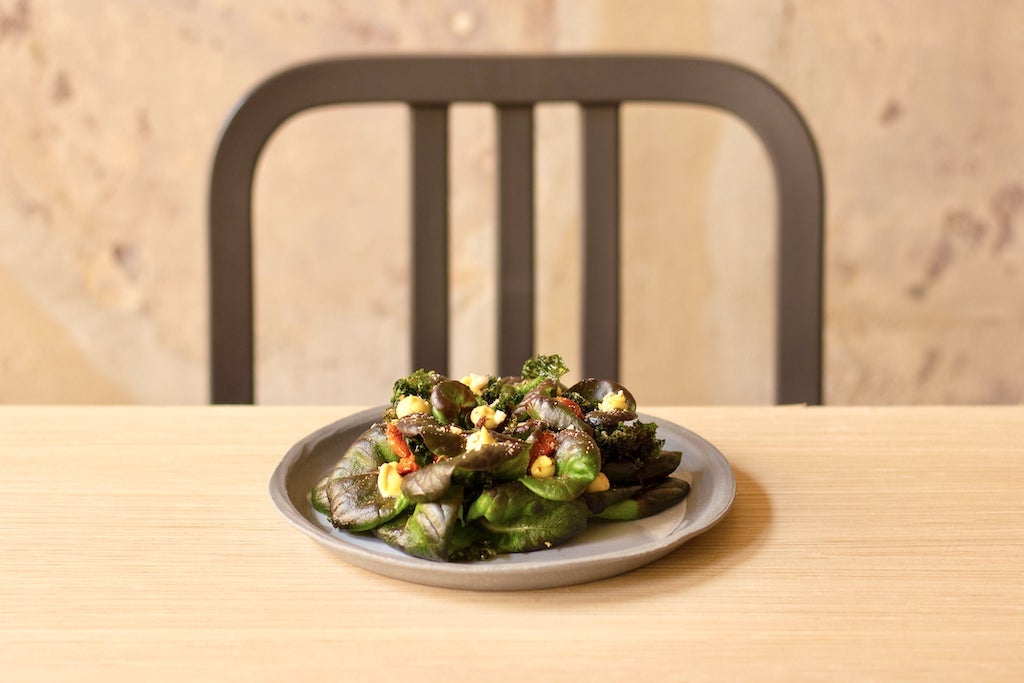
Chantelle Nicholson’s signature dish
“I have two favorites, but the first is our butterhead lettuce. We take a whole lettuce and dress it with vinegar and miso aioli. It’s everything I love on a plate: It’s crunchy, it’s got a bit of acid in there, it’s creamy. The second is our baked chocolate mousse, which is a warm milk chocolate pudding with miso custard.”
Jonathan Tam
Jatak, Copenhagan
If Paris was the originator of haute cuisine, Copenhagen is home to the new vanguard of modern cookery. Of course, one name instantly comes to mind: Noma. René Redzepi’s generation-defining restaurant stormed onto the scene in 2003, with its focus on foraged ingredients, hyper-seasonality and fresh flavors proving that there was room for more than just one branch of fine dining.
While Noma has now announced its closure (the jury is still out on whether they’ll follow through, though), Copenhagen continues to grapple with its legacy. Much of the city’s restaurant scene is infiltrated with its alumni, many of whom have gone on to become leading figures in their own rights. Among them is Jonathan Tam, a Canadian-born chef who began his Noma stint on the restaurant’s apprenticeship program before going on to be head chef at Christian Puglisi’s (also a Noma alum) Relæ for four years.
[See also: Les Ambassadeurs Opens at Hotel Metropole Monte-Carlo]
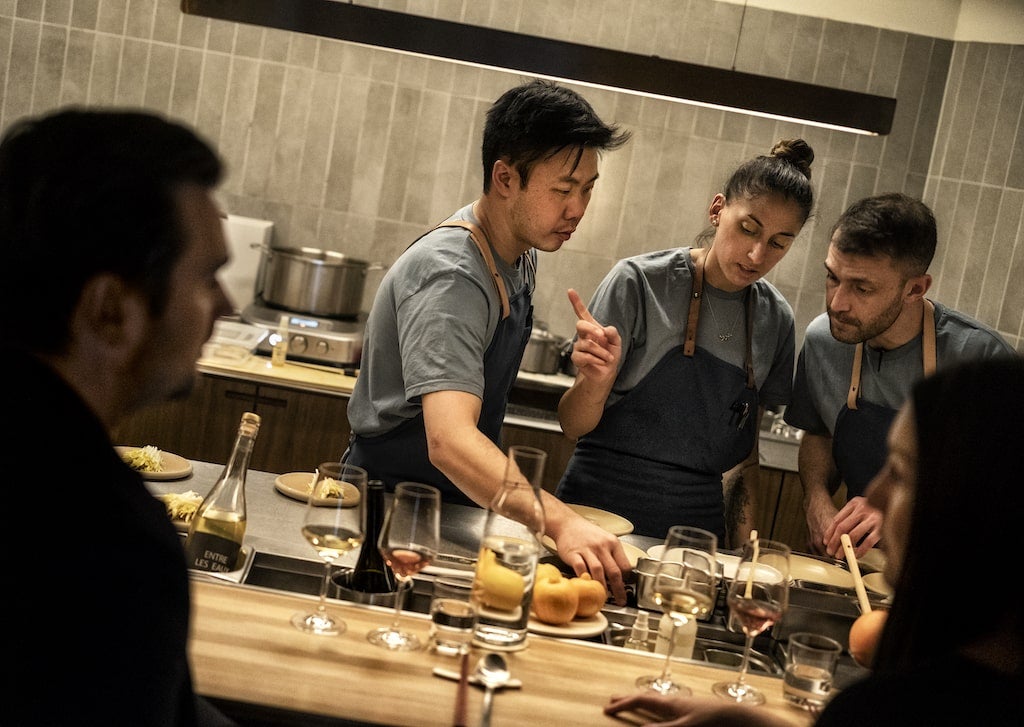
In 2022, partly motivated by Relæ’s closure, and partly by an awareness that no other Copenhagen restaurants quite matched his style, Tam decided to go it alone and opened Jatak (pronounced yah-tak). “We were uncertain to begin with, as people were saying things like ‘fine dining is dead, you need a pivot plan, you need to offer takeaway,’” Tam says.
All doubts proved unfounded, and Jatak was awarded a Michelin star months after opening. Located in the outrageously cool (but a little rough-around-the-edges) suburb of Nørrebro, the restaurant maintains the principles of New Nordic Cuisine, but through a lens of Asian flavors.
“A lot of people put us in this frame of being a modern Chinese restaurant, but I really disagree,” he tells me. “That is my background, but we’re just trying to find ways of sharing not just my culture and heritage, but also [that] of the rest of the team. It has become a cohesion where it’s done with local ingredients. Even when things sound like they’re from far away — maybe lemongrass or ginger — and people assume we’ve had it imported, we’re actually having it grown for us on local farms.”
There are two types of experience at Jatak: Dining Room and Kitchen Counter. As you might expect, the Dining Room is strictly limited to guests in the main restaurant, while Kitchen Counter is served only to diners who have booked a coveted kitchen-front seat, no exceptions. Naturally, a seat at either is tricky to nab; be sure to book early. Both menus are tasting menu only, with limited descriptions promising a meal full of surprises.
[See also: California Michelin Guide 2023: State’s Top Restaurants Revealed]
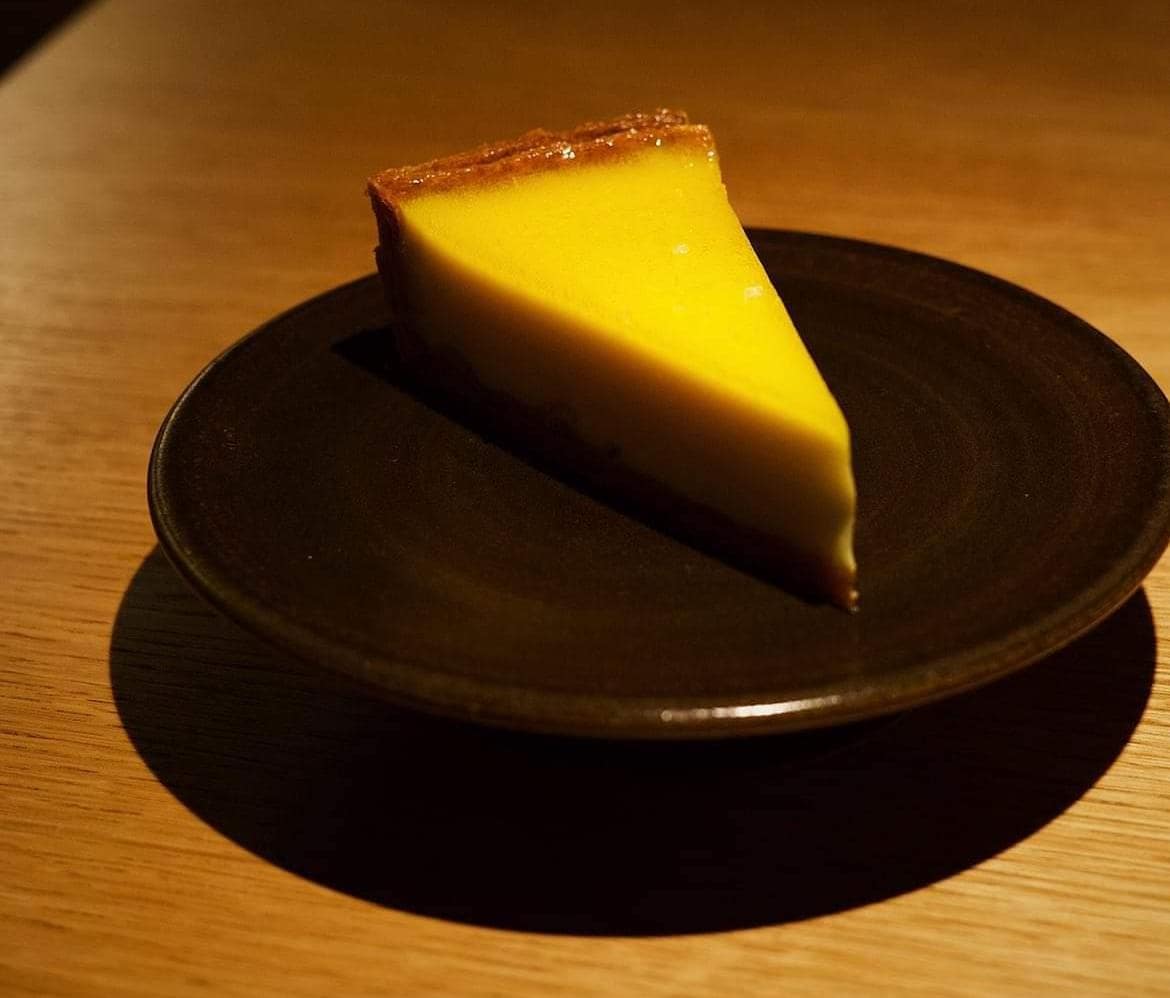
Despite the caliber of its chef and the culinary weight behind it, Jatak remains a relatively casual spot. “You’re literally in our space, in our kitchen,” Tam describes. “We want it to feel like guests are coming into our home. We have kids coming in to eat, we have elderly couples, young locals: We have everyone. We want to be welcoming and cozy — it’s detailed, but it’s not stuffy and not pretentious.” This is the new, new-wave fine dining.
Jonathan Tam’s signature dish
“We ran a dish for the first year that was our interpretation of the Cantonese Hong Kong-style egg tart. I find this dish shows how we work: I had this idea of a pastry that I used to get at Chinese bakeries, and I was telling my chefs about it. Some hadn’t had it; one of them had tried it in Singapore and another had tried something similar in London. Together we broke down the components and looked at how the Chinese made the flaky pastry and how the English use flaky pastry in their pies, and then together we came up with our own version.”
Charlie Mitchell
Clover Hill, New York
Although on the other side of the vast Atlantic Ocean, New York eatery Clover Hill also got the memo that casual is king in this new breed of fine dining. Hidden away in an unassuming but wealthy area of Brooklyn, the restaurant seats just 30 guests.
Muddled seating, warm lamps and vintage portraits make a meal here more like visiting a close friend’s home than dining at a formal restaurant. “We want people to feel comfortable, and the vibe should be intimate,” executive chef Charlie Mitchell explains via video call ahead of service. “It’s not the classic, stuffy fine-dining environment people are used to.”
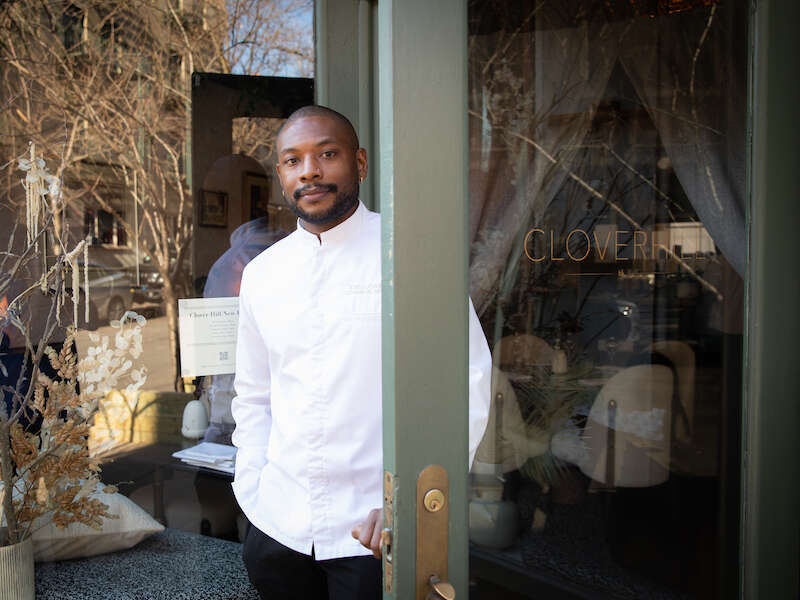
Having first opened in 2019, Clover Hill encountered a few Covid-related bumps in the road before reopening for good in 2022. Mitchell actually started as a consultant for the then executive chef in the restaurant’s pre-pandemic iteration, but has now stepped up as co-owner.
Mitchell’s culinary career to date has seen him take up roles in the likes of Daniel Humm’s Eleven Madison Park and Ryan Ratino’s Jônt. His work at Clover Hill is a million miles away from the machine-like processes of restaurants like this, though.
“When you’re somewhere like that, you only know your own section, and you have no idea what’s going on anywhere else,” he says. “In [Clover Hill’s] kitchen, there’s only a maximum of four of us, which means we’re really in touch with the food. Even if someone else is in on a different section, you can see what they’re doing and learn from them. It makes the food better and it makes the culture better.”
The menu at Clover Hill finds inspiration in a multitude of places. The focus is on seafood, with Mitchell calling on dishes from his childhood to craft thoughtful yet subtly familiar flavor profiles. His real culinary inspiration though, he tells me, is the craft of cooking. “I always want to get better, try new techniques and find new ingredients.”
[See also: The Best Alternative Restaurant Guides to Michelin]

In late 2022, Mitchell and his team’s efforts were duly rewarded with a Michelin star. For the chef, however, that first Michelin star was more relief than anything else. “Getting a star meant that we knew we had some longevity,” he explains.
“It also changed the clientele a bit, so we knew more people were coming to check us out because of that. Before, people would just turn up off the street and ask if we do a burger and fries. [The star] meant we could start to put more personality on the plate.”
Charlie Mitchell’s signature dish
“Last menu we had a rice dish with lobster, matsutake mushrooms and osetra caviar, which was as close to a signature as we’ve got so far. We change our menu a lot but I think we’ll keep the format of the dish — rice is never out of season but we will always change the flavor combination around it. We’ve decided to always keep a grain dish on that course. In winter it might be truffle — so deeper and darker — then in spring it will be fresher.”
[See also: Pavyllon London: Inside Yannick Alléno’s New Mayfair Restaurant]
This article appears in the 05 Jun 2023 issue of the New Statesman, Summer 2023
